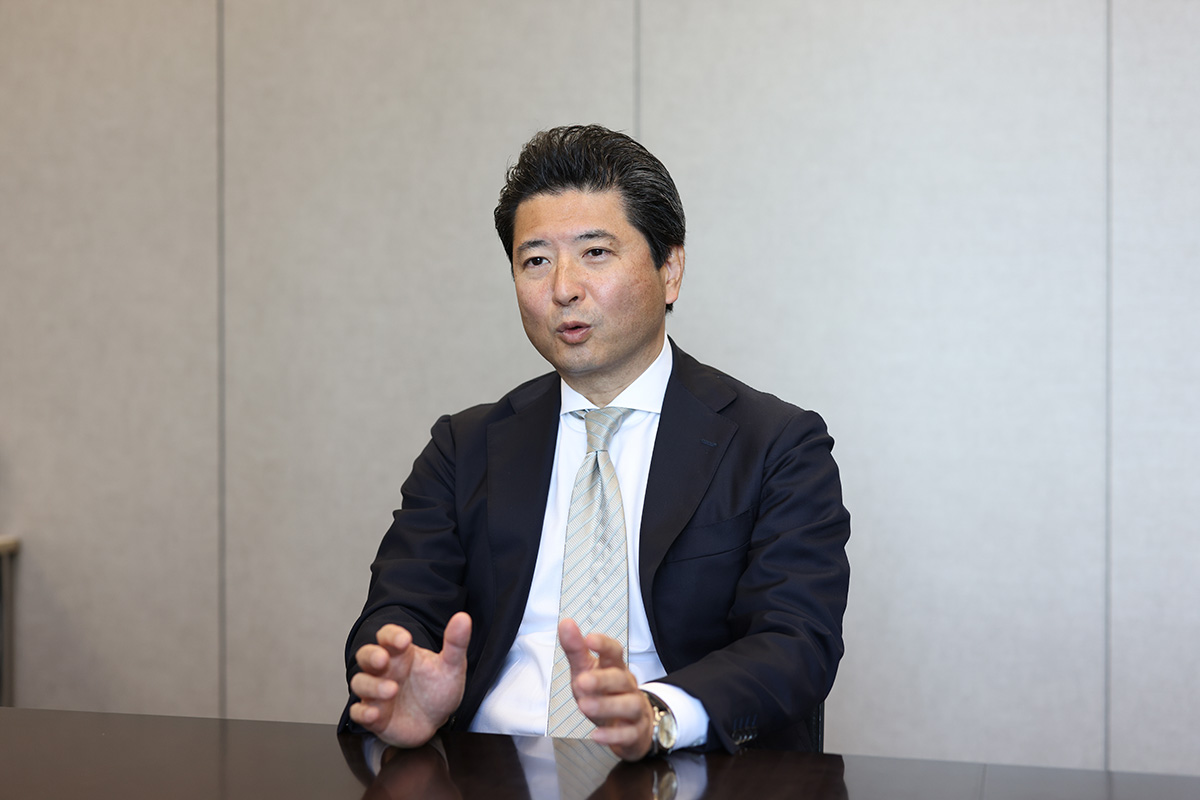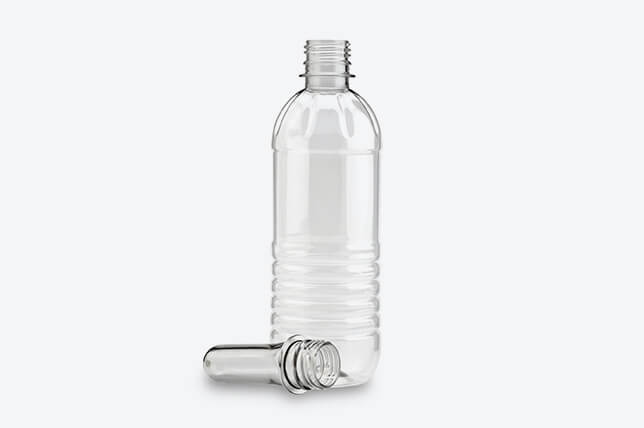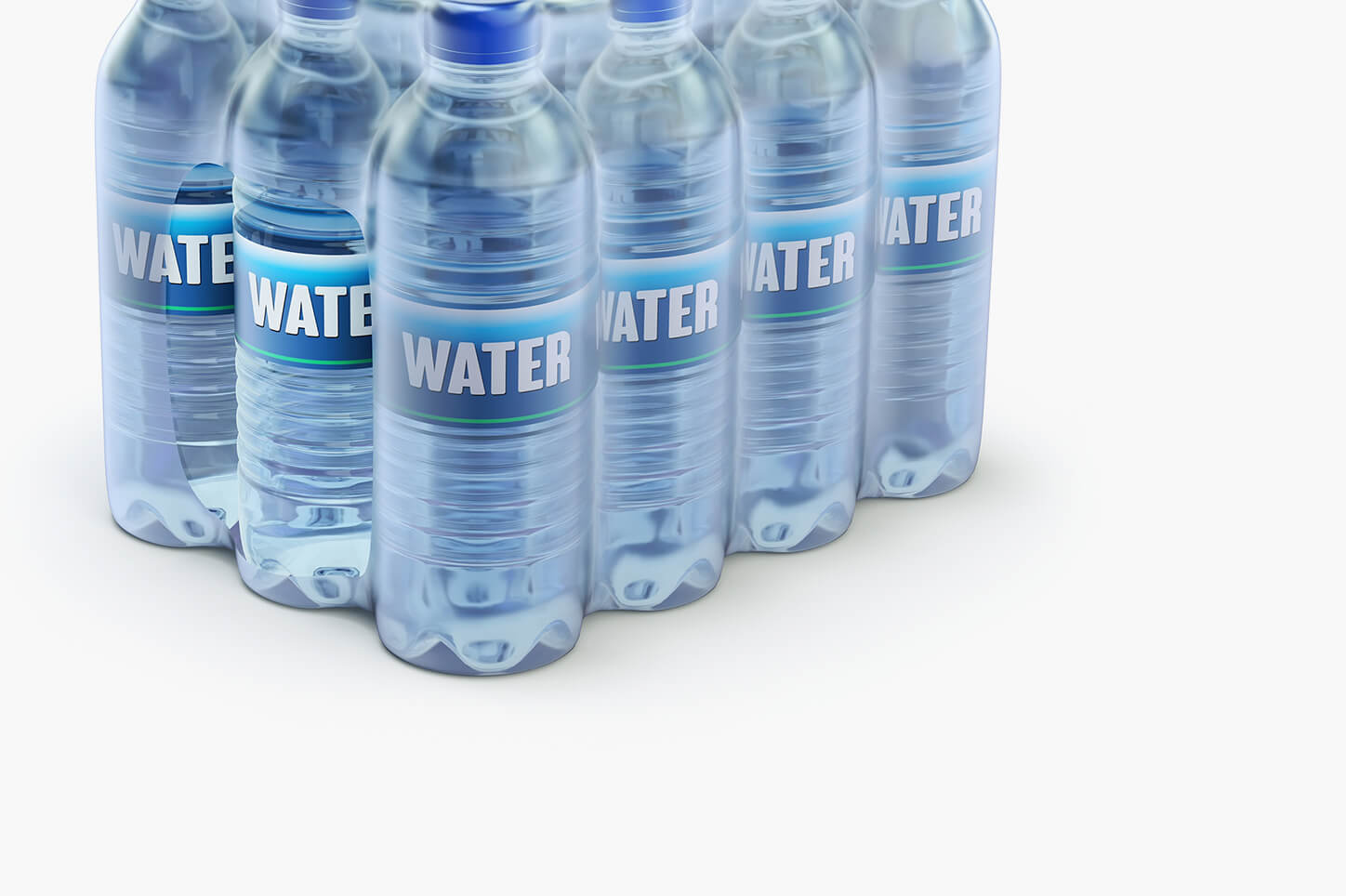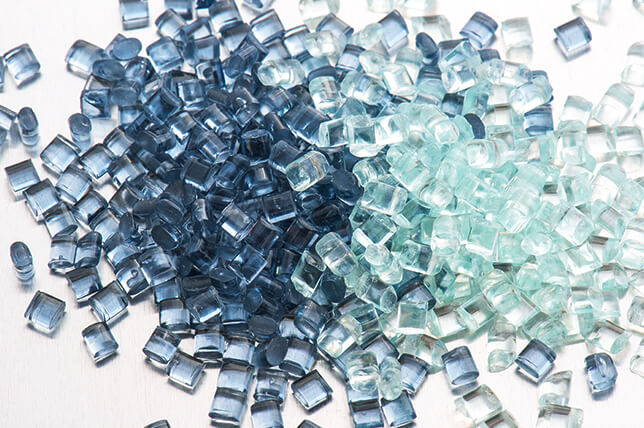
Japan is a country that is now facing a massive demographic shift. It is the world’s oldest society and has a declining population due to a low birth rate. In fact, experts believe that the population will dip under 100 million by 2050. This is creating two key issues in our opinion; the first is a labor crisis, and the second is a shrinking domestic market. How is Mitsubishi Corporation Plastics (MCP) reacting to these demographic changes? In your opinion, how much do you need to look overseas in order to secure the business continuity of your firm?
In the current situation the Japanese population is decreasing as you said, but in my opinion that doesn’t necessarily mean it is going to be a dramatic drop. Currently, the population of Japan sits around 120 million, and while that number isn’t going to increase, we believe we can still maintain our obligations.
In terms of the supply side, there are some threats from overseas countries like China, South Korea, and Taiwan, but within the domestic market, there are some industries that are expected to have structural revolutions. If there is restructuring the size of companies or the industry as a whole might shrink. In that case, supply orders might decrease, so in that sense, we would have to go overseas to conduct more business. We are in a fortunate position where we can leverage the network of our parent company in order to conduct more business abroad. I think this is a very big advantage that our company holds over some competitors.
Over the past 25-30 years Japan has faced the threats you mentioned from China, Korea, and Taiwan, who have replicated Japanese manufacturing processes, but done so at a cheaper labor cost, thus pushing Japan out of certain mass industrial markets. However, we still see Japanese firms such as yourselves as leaders in certain niche, B2B fields. With this in mind, can you tell us the main strengths of MCP? How is MCP able to compete with regional competitors despite the stiff price competition?
The world we live in today is becoming more and more aware of environmental concerns. Japan is part of that movement and we are aware as a nation that things need to change. There is no choice and countries all over the world must become more eco-friendly. A big example of an industry that needs to change is plastic, the industry we are in. We as a company are in a situation where we have to implement eco-friendly materials in order to survive.
As this environmental movement continues to gather steam we will need to catch as much information as possible so that we can provide information to our clients in advance. This allows them to prepare and become a part of this movement. I think another strength of MCP is our ability to respond to societal changes.
I think that bio-polypropylene derived from sugarcane is a great example of what you just mentioned. In fact, we’ve met with Daio Paper who are developing cellulose nanofibrils (CNF), which is a plant-based material that can mimic plastic and is used in automotive applications such as bumpers. Can you give us your perspective on how close or how far we are from transitioning fully to plant-based and environmentally friendly plastic materials? What are some of the key products you are working on in this regard?
First I would like to share some of the strengths of trading companies in general. As a trader we are actually facing various markets directly, so we think that is a strength. Even when we talk about eco-friendly, each client or industry has different purposes. Unfortunately, I think the big disadvantage of bio-materials in general is the cost.
You might be aware of the 3Rs, those being reuse, reduce, and recycle. Over the past 30 years, we have been trading plastics, but we feel it might be difficult to fully permeate the complete use of only bio-derived plastics. This is because the use of plastic has accumulated over 30 plus years now. However, as a company that is facing the market directly, we can better understand the preferences of customers and clients. Our mission is to meet the market needs, and although it may be through 3R products or bio-derived materials, it is not really our decision to make, that is for the customers to decide. The market will make the decision and we will respond accordingly by making more investments and focusing our efforts in the direction decided. Right now we are not at that phase yet, and I personally feel that the serious environmental movement only started a couple of years ago. As a trader, we feel we have the flexibility needed to adjust to the whims of the market.
With the growth in demand for sustainable solutions, each of your businesses has incorporated some ecological lines of conduct depending on your client’s needs. How do you align the products you offer with your client’s goals without impacting the level of quality?
I think this is something that our clients actually need to decide themselves. The onus is on the brand owners and plastic fabrication is one step before the brand owner gets hold of the products. The bottles and the caps are actually made by different manufacturers and our company is providing the resin to local manufacturers who are fabricating the caps of bottles.

Local manufacturers are actively exploring the production of eco-friendly goods, even if it means slightly higher costs. The rationale behind this approach is the belief that consumers are increasingly drawn to eco-friendly products, making it a potentially successful brand strategy. To address your question, the extent to which companies align their products with eco-friendly practices largely hinges on their brand strategy.
We engage with these brand owners to gain a deeper understanding of their commitment to eco-friendly production and materials. It's important to note that certain products in Japan are highly advanced and robust, which can make it challenging to introduce additional eco-friendly features or enhancements. In contrast, more general products offer greater flexibility in terms of incorporating eco-friendly elements.
Notably, our company has earned the International Sustainability & Carbon Certification (ISCC), a globally recognized sustainability certification system that oversees guaranteed biomass supply chains. This ISCC certification holds particular significance in Europe and empowers us to offer customers a broader array of options if they align with the ISCC system.

It is interesting that globalized standardization isn’t always accepted in Japan. As Japan’s legislation tightens and disposal options diminish, waste management is becoming a very increasing challenge in many industries. Having a domestic and international vision, the regulatory aspect is one that is always changing and shifting. How do you help your clients navigate the stressful and complex legislation involved in integrating a more circular economy?
Awareness of the environment is growing globally, and more and more people are becoming aware of eco-friendly options for the products they buy on a daily basis. In Japan, there are many companies that have committed to reducing their carbon emissions with the eventual goal of carbon neutrality by 2030 or 2050. It means that most companies are very aware that carbon emission reduction is something we have to do and can’t ignore. Right now, for MCP, we aren’t actually sure which method will be the best for our company.
As you mentioned, one of our missions as a company is to provide options to our clients, so there are a few strategies we have in terms of giving them the advice and options they need. The first strategy is to urge clients to get on board with CO2 emission reduction, otherwise, they might not make it by 2030. Although many companies have made commitments, I personally don’t feel that they really see what is going on in the world. If we don’t do anything collectively until the last minute, then it is going to be too late. We are asking clients to start moving and putting policies in place before they are left behind.
The other strategy relates to the domestic market, and the Japanese government is currently becoming much more serious about environmentally friendly initiatives for businesses. They believe that this activity will affect the growth of Japan. In particular, they are focusing on hydrogen and ammonia. In terms of carbon taxes, we believe that they can be collected and utilized for exporting businesses. It might be introduced by the Japanese government very shortly because the government wants more money for investment into eco-friendly technologies. In the short-term carbon tax might mean more expenditures but in the long term, it can reduce various other taxes. We explain to customers that right now eco-friendly technologies and products are high in cost, but once the tax is introduced costs will be reduced.
Automobiles is one of the major sectors that you cater to, and as you are aware it is undergoing a huge transition with the adoption of EV and hybrid vehicles. Here in Japan, we know that 2035 was set by the former Prime Minister Suga’s administration and all cars must be either an EV or a hybrid vehicle. With this transition, we are seeing new material trends and new entities enter the market. As a trading company, how are you catering to the new demands firstly, in terms of products for the automotive industry, and secondly, in terms of new types of customers internationally for your business?
When people think of plastic, they tend to think of materials that harm the environment, but with lightweight materials such as carbon fiber reinforced polymers (CFRP), we can actually make vehicles much more fuel efficient and thus much better for the environment. This is an arena we feel we can make contributions, and we are able to provide resins to meet the new demands of the industry.
In terms of the automotive industry, we do have a lot of business with certain Automotive manufacturers, and recently they have shown a lot of interest in the recycling business. There are so many ways to recycle in the automotive industry. One example is when cars involved in serious crashes need to be scrapped due to safety concerns. Those cars can be segregated into their materials and then those materials can then be recycled for use in new vehicles. This sort of recycling movement is now gaining a lot of traction within the industry.
We work closely with tier-1 and tier-2 companies to provide them with materials. When they receive products from us they often check the quality of the materials, so I think together with those companies we can make significant contributions to the recycling industry. This is what I feel is the best approach to permeating the recycling movement throughout the automotive industry as a whole.
We know that in Japan R&D spending is very strong and Japanese companies have historically been able to create amazing products. As a country, Japan is investing around 3% of the GDP into R&D, a significant jump from China’s 1.5% and the US’s 2%. Being a trading company you are essentially the gatekeepers to all the needs of your clients and thus are able to get a better sense of the evolving needs of the industries you cater to. To what extent does the influence of the other Mitsubishi Group companies help the development of new products? Are there any new trends or products that you are developing right now that you would like to showcase for us today?
We are a trading company, so we don’t really do any R&D per se, but we do want to have a better grasp of what is happening in Europe with recycling initiatives. The intention is to provide recycled materials both domestically and in international markets. We do have partnerships with several tier-1 and tier-2 companies that manufacture plastic parts. Those companies have their own research and development projects so we do try to assist by providing eco-friendly materials including recycled for them to check and compare to completely new materials. If a material quality is verified through these checks then we feel confident to introduce it to the market.
What role do partnerships play in your business model? Are you looking for any new partnerships either domestically or overseas?
I think right now is to concentrate for the current project with current partners. Regarding polyethylene terephthalate (PET) bottle recycling, we have made an investment with our parent company for collection at factories. We do have an overseas partner that we have been working with for a long time now in Thailand. In terms of the cost, Thailand is much cheaper especially when compared to Japan. When it comes to PET recycling, we produce flakes in Japan, while we consider several options for customer’s choice are taking PET flakes to Taiwan for mechanical recycling and Thailand for chemical recycling.

The key to finding a partner in my opinion is finding someone that matches our mindset and strategies, so in that sense, it is important to establish trust and a long-lasting relationship. This allows us to continue to make investments in this relationship in the future. Right now though, as I mentioned, the timing isn’t there, so we are looking to see how the market moves before establishing more overseas partnerships. I think unfortunately it is still early days.
We know that 46% of your revenue actually comes from overseas. Are you planning to expand more into maybe Europe or the US in the future?
When it comes to our overseas business opportunities we need to think about geographical risks. A good example is China and the US which are very conflicted with each other right now. This needs to be considered before taking any opportunities overseas. I think when taking those risks into consideration, the US actually has a low amount of risk when compared to Europe right now, and that is because of the ongoing Russian invasion of Ukraine. Southeast Asia might actually be easier for us all things considered.
Imagine that we come back on the very last day of your presidency and have this interview all over again. What goals or dreams do you hope to achieve by the time you are ready to hand the baton onto the next generation of MCP executives?
I think my core mission as president of MCP is to change the culture. As a company, I think we have already grown beyond our parent company’s initial expectations and we are now moving on to the next phase. For those who have worked for the company for a long time it might be difficult to change the way they think or work, but having said that, our new eco-friendly businesses are the new strategy that the company is now leveraging upon. This is a new challenge and an emerging market, so I think my job is to empower employees and push the company forward to become a success in new and exciting eco-friendly business opportunities.
0 COMMENTS